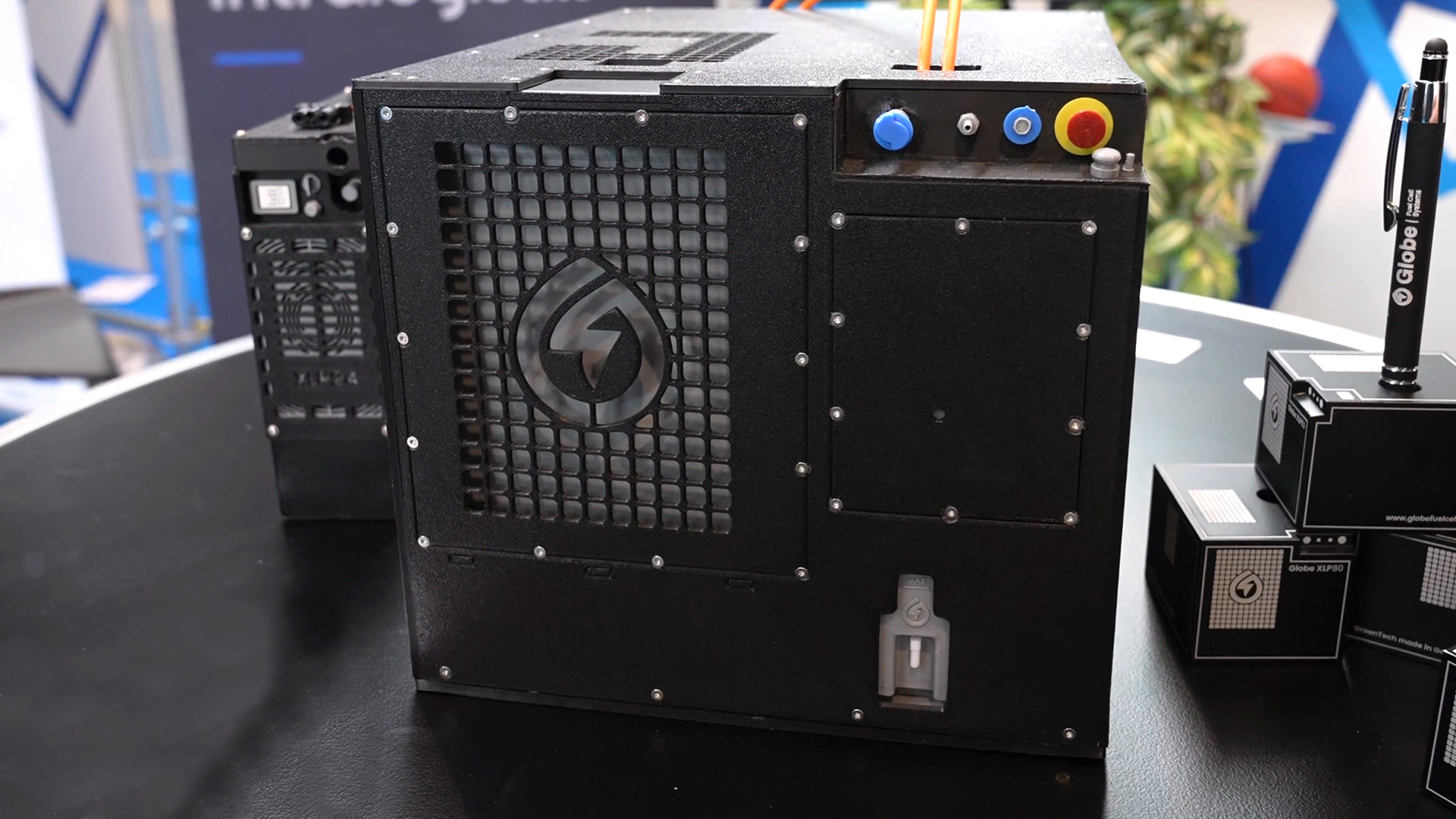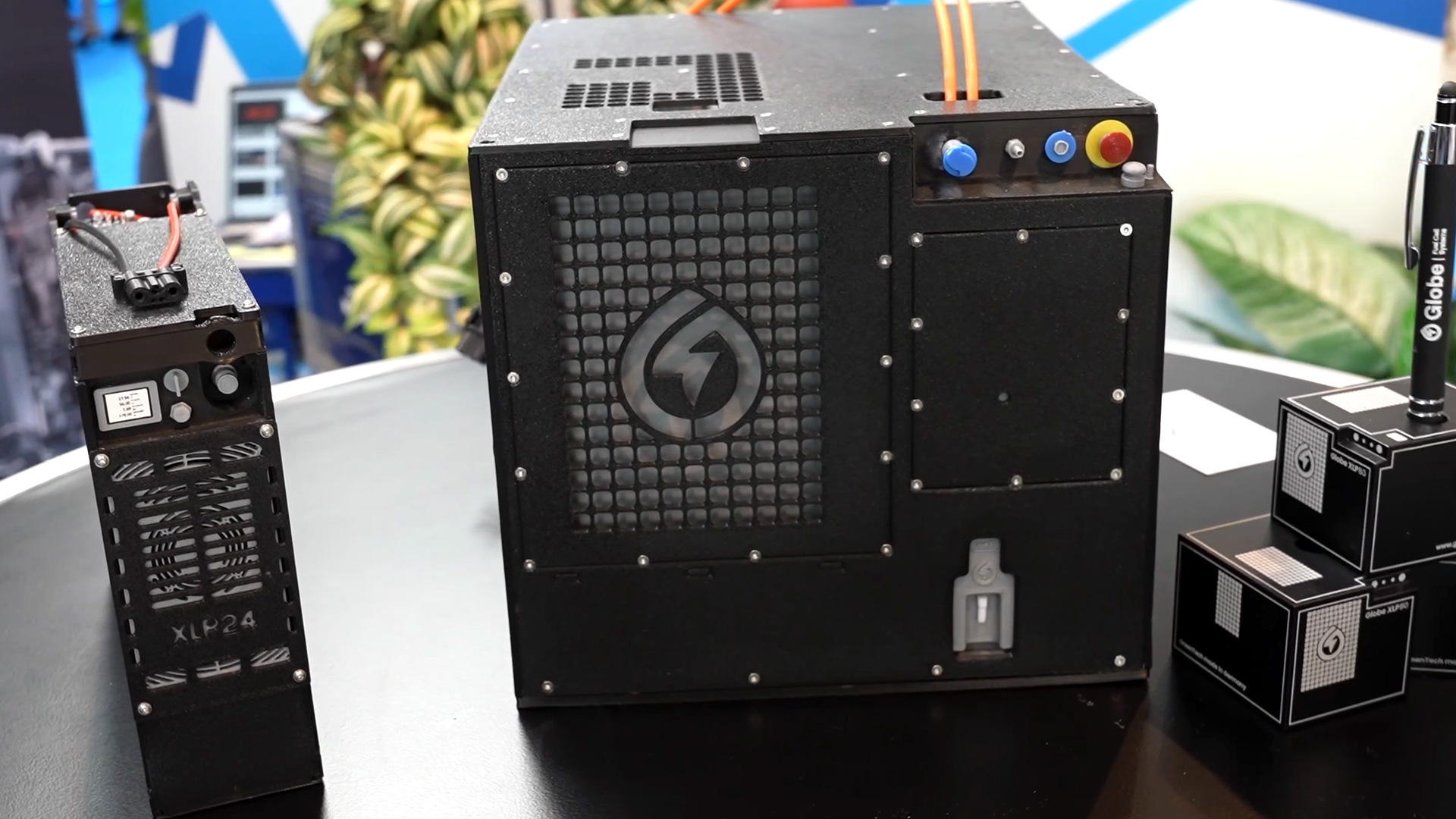The system developed by Globe is designed to replace existing batteries in forklifts or other industrial trucks without any structural changes. Power is still supplied via a standard cable, and the vehicle continues to operate in the same way. Inside, the fuel cell converts hydrogen into electrical energy and supplies it directly to the drive. The integrated tank operates at a pressure of 350 bar – an established industry standard. Refueling is carried out via a standardized interface, which means that the switch to hydrogen technology can be implemented without costly modifications.
A key advantage of the technology is the short refueling time. While batteries take several hours to charge, the tank of a Globe fuel cell can be refilled in around three minutes. This reduces downtime and enables continuous operation over several shifts. The system was designed based on practical measurements. With a tank volume of 60 liters—equivalent to 1.6 kilograms of hydrogen—industrial trucks with a load capacity of up to five tons can be operated for around seven hours. This means that only a short refueling process is usually required during shift operation.

The use of hydrogen offers economic advantages, especially for larger vehicle fleets. According to Globe, the switch is worthwhile for fleets of around 20 vehicles or more in multi-shift operation. The elimination of charging times and consistent operational readiness reduce downtime costs, and according to calculations, the investment usually pays for itself within three to five years. The technology allows for even utilization of the vehicles and reduces logistical bottlenecks that arise during battery operation due to charging breaks. For companies with continuous material flows, the system can enable more stable operations.
Several car manufacturers have integrated Globe's fuel cell technology into their production logistics. BMW uses the systems at its plants in Leipzig, Regensburg, and Munich, where forklift fleets are powered entirely by hydrogen. Mercedes-Benz also uses the technology in its production areas. Experience from these applications shows that hydrogen systems prove their worth in continuous operation. The decisive factors here are the short refueling times, constant power output, and stable energy supply—key factors for use in industrial logistics environments.

The current Globe system with a continuous output of 10 to 15 kilowatts is already being tested in further pilot projects. In a trial with construction machinery, the concept was adapted, but the core components remained unchanged. For larger power requirements, Globe is developing modules with up to 350 kilowatts, which are intended to replace diesel generators in industrial applications in the long term. This makes hydrogen increasingly relevant for large-scale mobile and stationary applications. With its development, Globe is helping to test the possible applications of this technology in various industrial sectors.